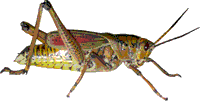Entomology Collections, General

Entomology Papers from Other Sources
Document Type
Article
Date of this Version
12-1998
Abstract
The physiological condition of Mexican fruit flies, Anastrepha ludens (Loew), affected their attraction to 2 similar but qualitatively different synthetic lures in wind-tunnel bioassays. The 2 lures were BioLure (ammonium acetate and putrescine) and AMPu (ammonium carbonate, methylamine HCI, and putrescine) . Effects of food deprivation on attraction to the lures were smaller than the effects of sex, time of day, and irradiation. Sugar-fed, protein-starved flies were attracted more strongly than other hunger-status groups to the lures. Sugar-starved, protein-starved females were less responsive than other groups of females to AMPu. Protein-starved males were more responsive than protein-fed males to BioLure. Females were nearly twice as responsive as males to the lures. Both lures were more attractive to females early and late in the photophase and more attractive to males during midphotophase. Gamma irradiation of flies greatly reduced their attraction to both lures. Fly age from 6 to 17 dafter eclosion had little effect on attraction to the lures. AMPu was more than twice as attractive as BioLure summed over all wind-tunnel experiments. A field test using BioLure and AMPu on sticky traps confirmed the greater attractiveness of AMPu to laboratory-colony flies.


Comments
Published in Physiological and Chemical Ecology.